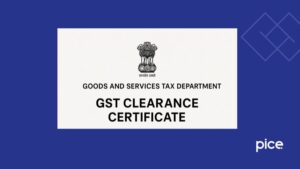Valuation Rules Under GST Explained with Examples
- 12 Nov 25
- 11 mins

Valuation Rules Under GST Explained with Examples
Key Takeaways
- The valuation of supply under GST determines the taxable value on which GST is calculated for goods and services.
- Transaction value forms the basis of valuation when buyer and seller are unrelated and price is the sole consideration.
- Rules 27 to 34 of CGST define specific methods for valuation, including barter, related-party, agent-based, cost, and residual methods.
- Accurate valuation ensures proper tax calculation, ITC claim, and legal compliance under the GST framework.
- Businesses must choose the right valuation rule to avoid mismatched GST payments, penalties, and compliance issues
With the introduction of the Goods and Services Tax (GST) in 2017, the Indian government launched a path-breaking reform aimed at establishing a "One Nation, One Tax" regime. Considering the gross GST collections in 2024–25, this initiative appears successful, showing a year-on-year growth of 9.4%.
This makes it clear that understanding the valuation of supply is crucial for businesses, as GST is determined based on the value of taxable supply. So, read this blog to explore the key valuation rules under GST and ensure accurate tax compliance.
What is the Valuation of Supply Under GST?

Under Goods and Services Tax, the valuation rules of supply refer to determining the value of goods or services on which GST needs to be calculated. Basically, this is the actual price paid or to be paid for the supply, called the transaction value. It applies when a buyer and seller are not related and the price is the only thing that is under consideration.
This value also includes:
1. Extra charges such as duties, fees, cess, taxes (other than GST), packing costs, commission and any amount a buyer pays on behalf of a seller.
2. Subsidies related to supply, except those given by the Government, will be added to the value.
3. Late fine, interest and penalty for outstanding payment of consideration, all will be added.
However, the GST Council excludes GST itself and any eligible discounts from this value. Accuracy in the valuation of supply is indispensable to ensure proper GST calculation and compliance with tax rules.
Understanding Valuation Rules Under GST with Example
Look at the table to understand the process of calculating the transaction value:
| Product Price | Price Details (₹) |
| Printer | 7,000 |
| Insurance | 500 |
| Freight | 500 |
| Pre-supply Discount | 500 |
| Total Transaction Value | 7,500 |
| GST Rate | 18% |
| GST Amount | 1,350 |
| Final Value of Supply | 8,850 |
| Remarks | Insurance and freight amounts are included, a discount is deducted and GST is applied. |
Complete Analysis of Valuation Rules Under GST

Currently hosted on CBEC’s portal, the valuation rules under GST are making a significant impact on all businesses in India. To make them understandable to users, here is a comprehensive analysis of these valuation rules, classified into different categories. They are:
1. Rule 27: Value of Supply of Goods or Services Where Consideration is Not Entirely in Money
Rule 27 denotes cases where a buyer gives another good in exchange for a barter.
Example:
If a brand sells a phone for ₹24,000 along with an old phone in exchange, and the price of the new phone without any exchange is ₹28,000, then ₹28,000 will be the open market value of the new phone (example of exchange).
Suppose a company sells a personal computer for ₹50,000, and in return, a buyer gives a printer as barter. The printer is manufactured by the buyer and is worth ₹4,500 at the time of supply. Since the open market value of the PC is not available, the value of the supply of the PC will be ₹50,000 + ₹4,500 = ₹54,500 (example of barter).
2. Rule 28: Value of Supply of Goods or Services or Both Between Distinct or Related Persons, Other than Through an Agent.
For distinct or related persons (as per Section 25(4) and 25(5) of the Central Goods and Services Tax Act), the value of the supply is the open market value as per Rule 28. If it is unavailable, it will be the value of the supply of products or services of like kind and quality.
However, the value shall be determined by either using the cost or residual method if it is not determinable in the above two cases.
Example:
XYZ Ltd. sells a product worth ₹1,30,000 (the OMV of that particular product) to ABC Ltd. for ₹1,00,000. Now, GST of ₹18,000 (18% of ₹1,00,000) is charged as per the CGST Act and ABC Ltd. claims the full amount as input tax credit. Since ABC Ltd. is eligible to obtain complete input tax credit, the invoice value of ₹1,00,000 is accepted for GST valuation.
Later, when ABC Ltd. sells the final product, they can only claim the ₹18,000 already paid as credit, not the tax that would apply to open market value, which is ₹1,30,000.
3. Rule 29: Value of Supply of Goods Made or Received Through an Agent.
As per Rule 29, this GST valuation rule covers cases where goods or services are supplied between a principal and an agent. These transactions are taxable under GST. To avoid any issues with tax authorities, both parties must follow these rules when valuing such supplies for proper GST calculation and compliance.
Example:
Assume Mr. A (the principal) supplies groundnuts to his agent, Mr. B. On the date of supply, Mr. B sells similar groundnuts at ₹5,000 per quintal, based on their type and quality. Meanwhile, another independent supplier, Mr. C, sells the same kind of groundnuts to Mr. B at ₹4,550 per quintal.
Hence, the value of Mr. A's supply would be ₹4,550 per quintal (the open market value). However, if Mr. A opts to use an alternative method, he can value it at 90% of ₹5,000, which comes to ₹4,500 per quintal.
4. Rule 30: Value of Supply of Goods or Services or Both, Based on Cost

Among all the valuation rules under GST in India, this method focuses on valuing goods or services based on their cost of manufacture or acquisition. In simple terms, Rule 30 follows the cost method, which states that 110% of the cost of producing or providing goods or services will be considered for valuation, and GST will be charged on that amount.
Example:
Take the example of XYZ Limited. This manufacturer produces office chairs and the cost of each chair is ₹4,000. The open market value of the same type of chair is ₹4,500. Since the OMV is known, ₹4,500 will be considered for the valuation of supply.
If the OMV is not available, the value of supply as per the cost method (i.e. Rule 30) will be calculated as ₹4,000 × 110% = ₹4,400. Note that GST will be imposed on ₹4,400 in this case.
5. Rule 31: Residual Method for Determination of Value of Supply of Goods or Services or Both
If businesses can not determine the value of the supply of goods or services using the cost method (i.e. Rule 30), they must use the residual method to determine the value as per Section 15 under the GST law. However, they should use Rule 31 accurately. Wrong valuation to reduce tax can lead to strict penalty provisions under the current GST framework.
Example:
When manufacturers or companies can not determine the cost of manufacturing accurately, the residual method (i.e. Rule 31) is used to determine the value of supply on a per-unit basis. Another example of this method is valuing based on the number of working hours necessary to complete a job.
6. Rule 32: Determination of Value in Respect to Seven Specific Supplies
As per 32 and 32A valuation rules under GST, the methods to determine the value of the following 7 specific supplies have also been prescribed under Chapter IV of the CGST Rules, 2017:
- Purchase or sale of foreign currency, such as money changing;
- Value of supplies where Kerala Flood Cess is applicable;
- Ticket booking for air travel by an air travel agent;
- Value of redeemable vouchers/stamps/coupons/tokens;
- Value in case of a notified supplier of services;
- Life insurance business;
- Value of supply of second-hand goods
7. Rule 33: Value of Supply of Service in Case of a Pure Agent
This rule applies to exclusive cases where an expenditure and costs incurred by a supplier, acting as a pure agent of the service recipient, must be excluded from the value of supply.
Example:
Suppose X, a corporate services firm is hired to handle legal work for setting up Company Y. Apart from its service fee, X also collects registration fees and approval fees for the company name paid to a Registrar on behalf of Y. Since these fees are mandatory for Y and X just pays them as a pure agent, they are not included in X's service value.
8. Rule 34: Rate of Exchange of Currency, Other than Indian Rupees, for Determination of Value
The value of taxable services or goods or both will be decided using the applicable exchange rate prescribed by the Reserve Bank of India. The determination is based on the reference rate in effect on the date of supply, per Section 12 or Section 13 of the Act, as applicable.
Valuation Rules Under GST: Key Aspects and Their Importance

Explore the crucial elements to determine the value of supply in the table below:
| Key Components | Importance |
| Tax calculation | It ensures the accurate GST rate is applied. |
| Legal compliance | It assures proper legal compliance with GST rules and prevents the potential of penalties. |
| Pricing strategies | This factor impacts decisions related to pricing and the competitive landscape. |
| ITC | It facilitates the proper claim of input tax credits. |
| Financial planning | This factor helps ensure precise financial planning and forecasting. |
Conclusion
Note that most valuation rules under GST are case-specific. The GST Council (the key decision-making body) has also prescribed valuation rules for specific businesses, such as lottery, gambling, betting and horse racing under Rule 31A of the CGST Rules, 2017 (Clause 6 of the valuation rules).
Understanding these rules aids in improving accuracy to include or exclude relevant elements, apply the appropriate methods (cost and residual), and determine the correct GST rate.
💡If you want to streamline your payment and make GST payments via credit, debit card or UPI, consider using the PICE App. Explore the PICE App today and take your business to new heights.
 By
By 

















